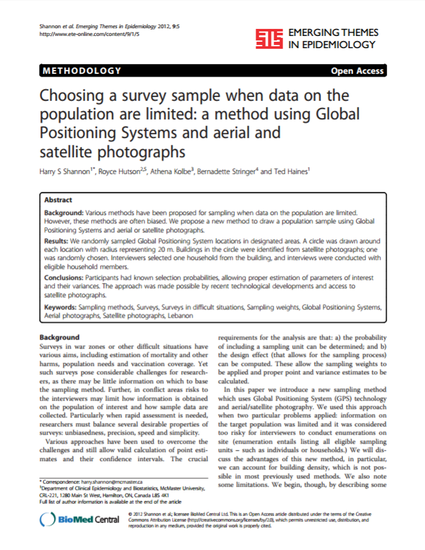
Background: Various methods have been proposed for sampling when data on the population are limited. However, these methods are often biased. We propose a new method to draw a population sample using Global Positioning Systems and aerial or satellite photographs.
Results: We randomly sampled Global Positioning System locations in designated areas. A circle was drawn around each location with radius representing 20 m. Buildings in the circle were identified from satellite photographs; one was randomly chosen. Interviewers selected one household from the building, and interviews were conducted with eligible household members.
Conclusions: Participants had known selection probabilities, allowing proper estimation of parameters of interest and their variances. The approach was made possible by recent technological developments and access to satellite photographs.
This document was originally published in Emerging Themes in Epidemiology. This work is provided under a Creative Commons Attribution 2.0 license. Details regarding the use of this work can be found at: http://creativecommons.org/licenses/by/2.0/. DOI:10.1186/1742-7622-9-5
Available at: http://works.bepress.com/royce_hutson/8/
